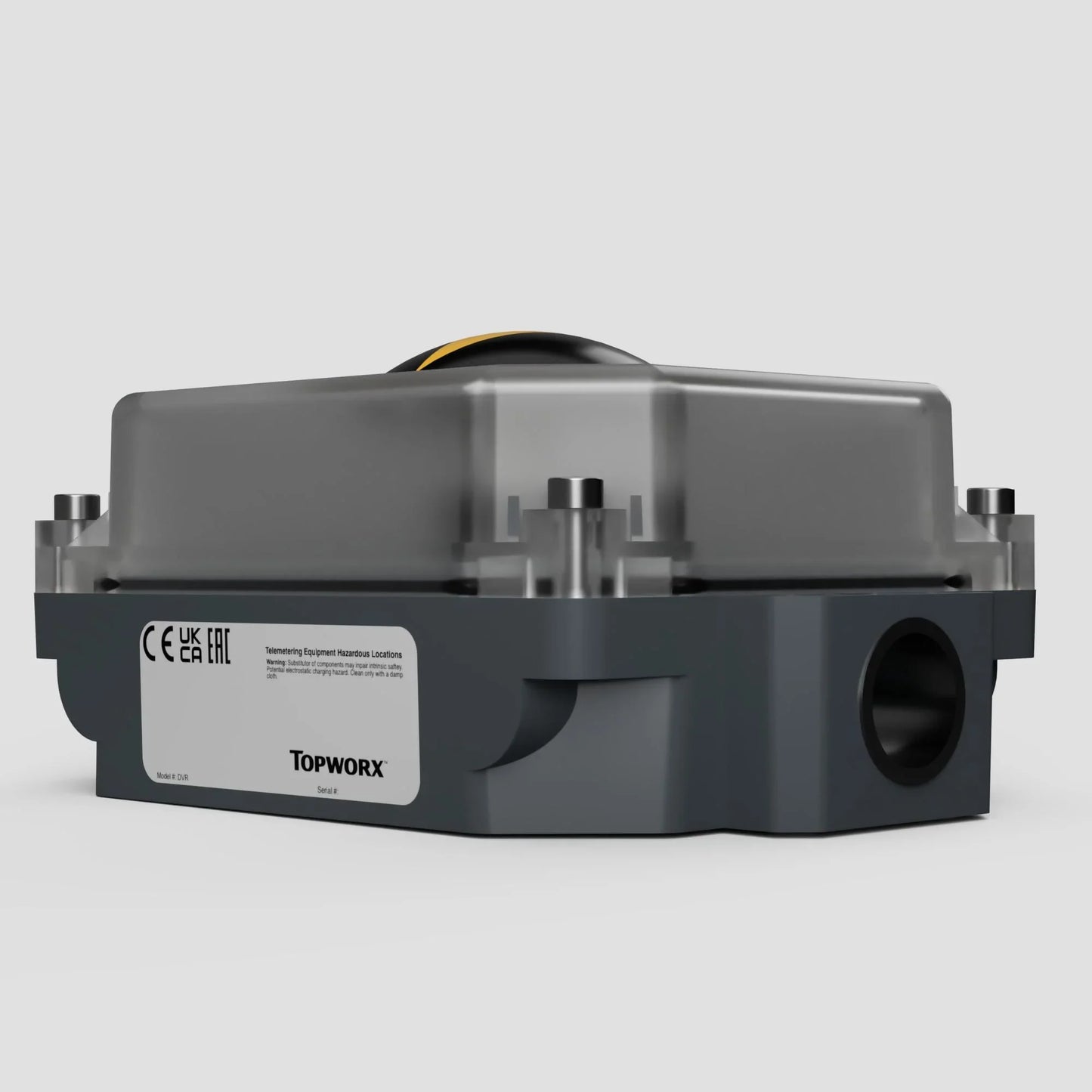Topworx Switchbox
Topworx Limit Switch box DVR-M2WLNPM Valve Monitor
Topworx Limit Switch box DVR-M2WLNPM Valve Monitor
Couldn't load pickup availability
The DVR-M2WLNPM is a compact and versatile switchbox designed for confined spaces across various industries, including water and wastewater, industrial utilities, and food and beverage. Its robust construction and advanced features ensure reliable performance in challenging conditions.
Key Features:
-
Engineered Resin Enclosure
Crafted from UV F1-rated engineered resin, the enclosure delivers exceptional durability and resistance to environmental factors, ensuring long-lasting outdoor performance. -
Mechanical SPDT Switches
Features two Single Pole Double Throw (SPDT) mechanical switches, offering precise and dependable position feedback for critical valve monitoring. -
Low-Profile Indication
The yellow and black low-profile visual indicator ensures clear, easy-to-read position feedback, optimising operational efficiency. -
NAMUR Standard Shaft
Includes a 316 stainless steel NAMUR-compliant shaft, providing corrosion resistance and seamless integration with standard actuators. -
Conduit Entries
Equipped with two 1/2" NPT conduit entries, enabling simple and secure wiring connections for hassle-free installation. -
Silicone O-Rings
Silicone O-rings provide robust sealing, protecting internal components from dust and moisture for consistent performance in tough environments.
The DVR-M2WLNPM is the ideal choice for industries requiring reliable valve monitoring solutions, ensuring productivity and resilience in demanding conditions.
Share

FAQ's
What is the difference between a valve and an actuator?
What types of actuators are available?
The main types of actuators are:
Pneumatic actuators – use compressed air for fast, reliable operation.
Electric actuators – use electrical power for precise control.
Hydraulic actuators – use fluid pressure for high-torque applications.
Each type offers unique advantages depending on the environment, media, and system control needs.
How do I choose the right actuator for my valve?
To select the correct actuator, consider:
Valve type and torque requirement
Power source available (air, electric, or hydraulic)
Operating environment (temperature, humidity, hazardous area)
Control signal type (on/off or modulating)
Matching actuator torque and compatibility with the valve’s ISO mounting ensures reliable performance.
What are the main types of valves used in automation?
The most common valves in automated systems include:
Ball valves – for tight shutoff and quick operation.
Butterfly valves – for larger flow control with compact design.
Globe valves – for precise throttling and flow regulation.
Check valves – to prevent backflow.
Gate valves – for full bore flow isolation.
What’s the difference between a double-acting and spring-return actuator?
Double-acting actuators use air (or power) to both open and close the valve.
Spring-return actuators use air to open (or close) the valve, and a built-in spring to automatically return it to a safe position when power or air is lost — ideal for fail-safe operation.
How often should valves and actuators be serviced?
Regular maintenance intervals depend on operating conditions, but a good rule of thumb is to inspect every 6–12 months.
This includes checking for leaks, lubrication, seal wear, and actuator responsiveness to prevent unexpected downtime.

